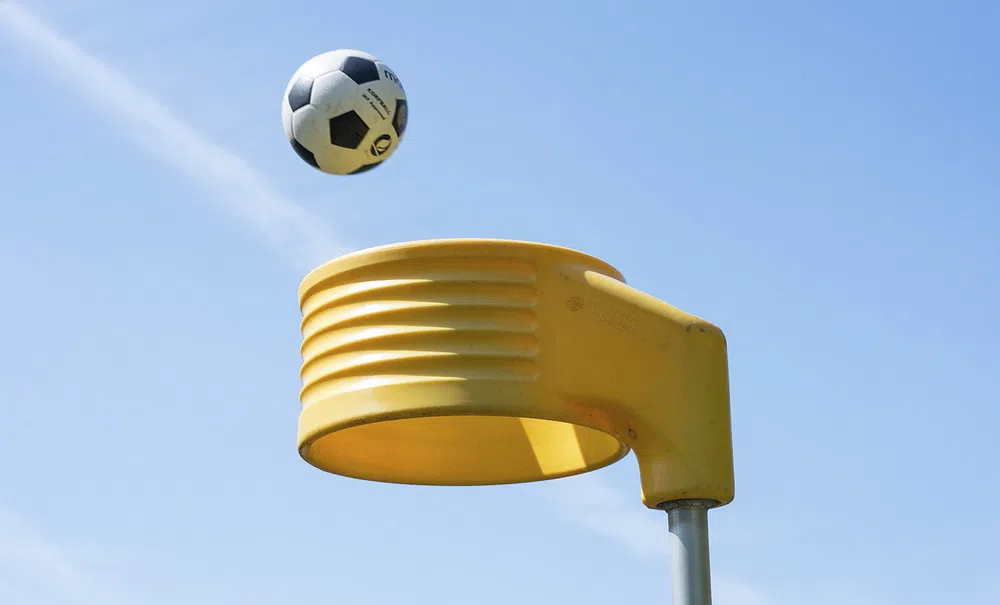Beginner’s Guide to Korfball: Embracing the Game as a New Hobby
Embarking on a new hobby can be an exciting way to challenge oneself and stay active, and korfball is a sport that offers just that, with a blend of teamwork, strategy, and physical fitness.
Originating from the Netherlands, korfball is a game that has garnered popularity across Europe and is steadily gaining traction in the USA. It’s a mixed-gender sport, which makes it unique, promoting equality and cooperation between men and women on the same team.
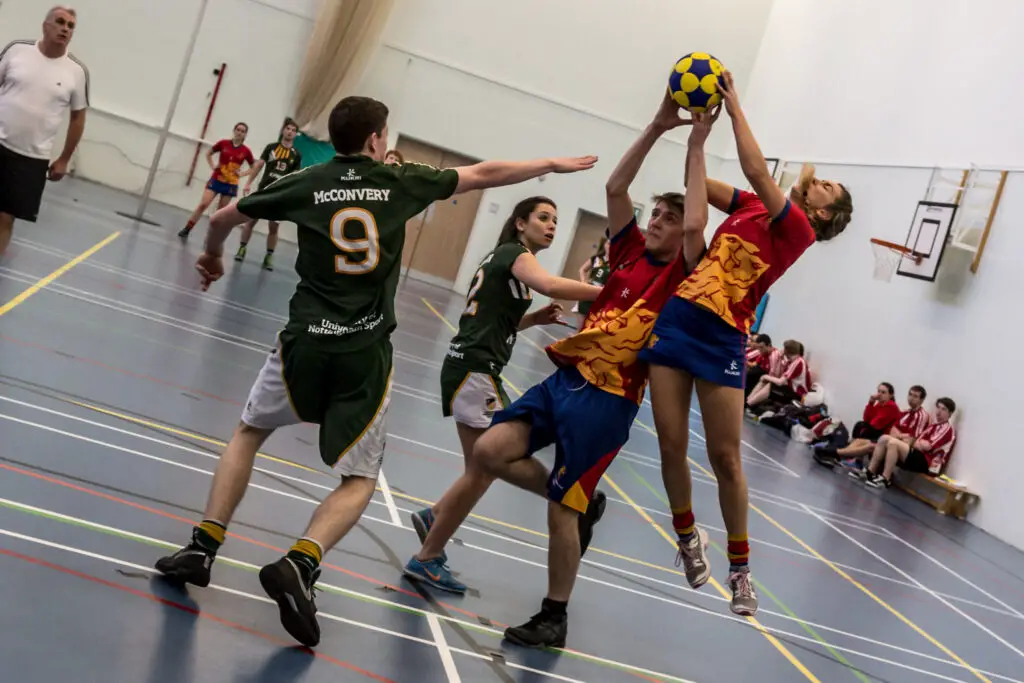
If you’re curious about trying out a team sport that defies traditional gender roles and emphasizes cooperative play, korfball might just be the hobby to pique your interest. As a beginner, you will learn that korfball is played on a rectangular field, with teams consisting of eight players, divided equally by gender. The objective is straightforward but challenging: to score points by shooting a ball into the opposing team’s korf— which is Dutch for basket.
Understanding korfball’s basic rules will serve as the foundation of your new hobby, guiding you through the intricacies of the game’s attack and defense strategies. Engaging in korfball as a beginner not only offers you the chance to be part of a fast-paced and dynamic sport but also connects you to a global community that thrives on inclusivity and mutual respect among its players.
Understanding The Basics of Korfball

Engage in korfball, a dynamic sport that stands out with its unique blend of teamwork, strategy, and gender-inclusive play. You’ll find it refreshing compared to traditional team sports, and grasp the basics quickly—whether it’s the objective or the spirited mixed-gender interaction on the court.
The Concept of Korfball
Korfball is a sport where you’re part of a team with a straightforward goal: to score points by throwing a ball into the opposing team’s korf (basket). Mastery of passing and running is crucial, as is coordination among team members. Unlike some sports, you cannot dribble; the ball must be passed while stationary once you’ve taken possession. This sport promotes quick thinking and agile movement.
Korfball vs. Other Team Sports
Korfball bears similarities to basketball and netball, but it is distinct in its approach and rules. One key difference is the absence of a backboard for the basket, requiring a more precise throw to score. Additionally, compared to other team sports, korfball is recognized for its emphasis on cooperation and movement over individual prowess.
Playing Mixed Gender Teams
In korfball, teams are mixed gender, typically composed of four female and four male players. This unique aspect of korfball fosters an inclusive environment and requires strategies that make use of the varied strengths of all players. Your role can switch between attack and defense at any time during the match, offering a dynamic and engaging experience.
Through understanding these basics, you’ll start to appreciate korfball as a sport that celebrates inclusivity, strategic play, and teamwork. Whether you’re running to receive a pass or collaborating with teammates, your skills and adaptability will grow with each game.
Essential Korfball Skills and Techniques

To thrive in Korfball, developing a strong foundation in key skills and techniques is vital. This includes precise shooting, strategic passing, and robust defensive and offensive maneuvers. By honing these abilities, you’ll not only elevate your skill level but also enjoy the game more fully.
Mastering the Korfball Shot
In Korfball, your shooting technique is integral to scoring. Focus on your body positioning and balance to ensure accuracy. Practice various shooting drills to improve your coordination and muscle memory. For example:
- Standing Shot: Stand static and shoot from different distances.
- Running Shot: Approach the korf at pace before shooting to simulate game conditions.
Remember, the key is consistent practice to develop your shooting prowess.
Effective Passing Strategies
Passing is the backbone of korfball strategy, and mastering it is critical for fluid team play. Use a mix of short, quick passes and long, accurate throws to keep opponents guessing. It’s important to:
- Maintain eye contact with the receiver.
- Pass with both hands for better control.
Effective passing is also about anticipation and understanding your teammates’ movements.
Defensive and Offensive Skills
In Korfball, defense and offense are about spatial awareness and team coordination. On defense, stay alert and intercept passes to disrupt the opposition. Conversely, on offense:
- Utilize feints and dodges to create space.
- Communicate with teammates to execute strategic plays.
Elevating your defensive and offensive skills requires not just individual effort but also synchronized team dynamics.
Korfball Equipment and Game Setup
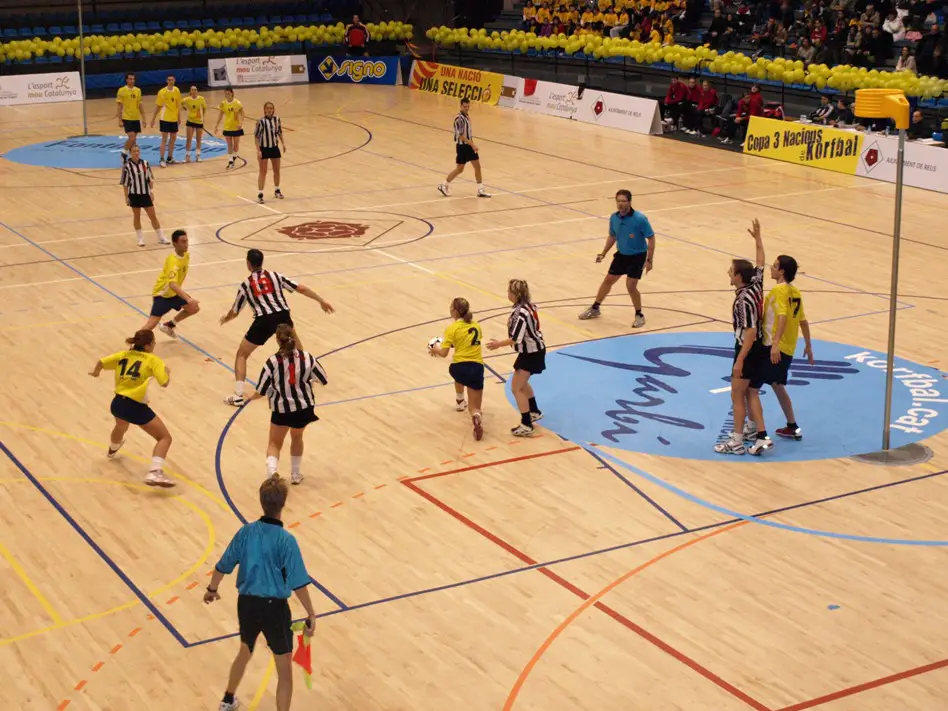
Before you start playing Korfball, it’s important to have the correct equipment for a seamless experience and to fully understand player positions to effectively participate in the game.
Choosing the Right Equipment
Equipment is fundamental in Korfball, and choosing quality gear contributes to both your comfort and performance. Your main requirements will be a lightweight ball designed specifically for Korfball, which is typically made of rubber and offers good grip.
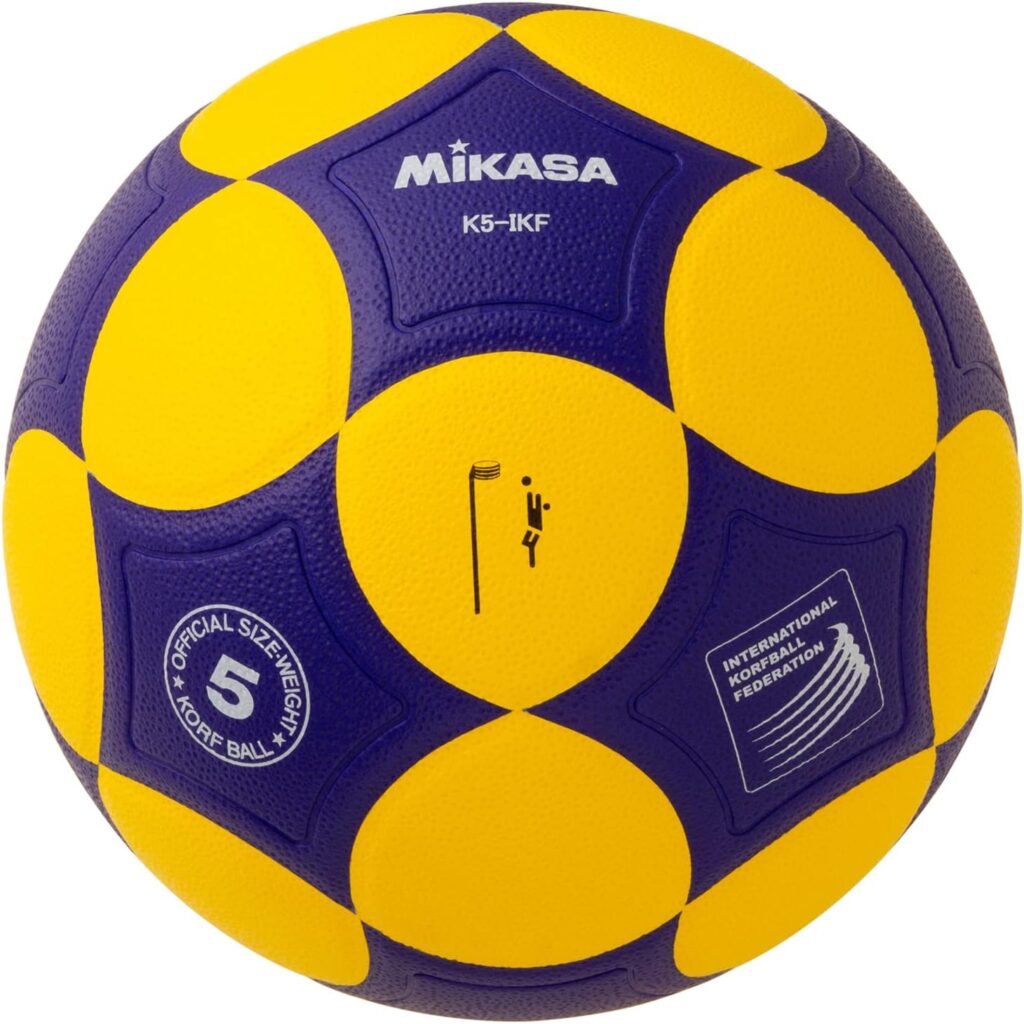
Korfball sets often come with a korf, which is the basket into which players aim to throw the ball. These sets also include poles on which the korf is mounted at a prescribed height. Make sure the korf is sturdy and conforms to official Korfball specifications.
- Ball: Use a size 5 Korfball for males aged 14 and above and females aged 16 and above. For younger players, a size 4 is appropriate.
- Korf (Basket): This should be mounted on a pole with an overall height of 3.5 meters for seniors and 3 meters for U16 categories.
Understanding Korfball Positions
In Korfball, your position on the court is not fixed; you will switch between attack and defense roles with your teammates. There are two main zones on a Korfball field: the attacking zone and the defending zone. Each zone has two male and two female players from each team at any time. Players rotate positions following a scored goal or after a certain period, ensuring everyone experiences both offensive and defensive gameplay.setPositional understanding is crucial to the flow of the game and the effectiveness of your team’s strategy.
Rules and Regulations
Understanding the rules and regulations is key to appreciating Korfball as a sport and playing it effectively. In Korfball, you focus on teamwork and strategy, with the aim to outscore your opponent while playing within a well-defined set of rules that promote fair play and equality.
Scoring and Game Objectives
Your primary objective in Korfball is to score by shooting the ball through your opponent’s korf (basket). Each successful shot earns your team a point. The game is played on a rectangular field with zones, and you must shoot from within your designated attacking zone. Importantly, shots must not be defended by an opponent standing closely with arms up to avoid the score being invalidated.
Fouls and Free Passes
Physical contact is limited in Korfball, and actions like pushing, holding, or hindering an opponent, especially of the opposite gender, result in fouls. If you commit a foul, the opposing team is awarded a free pass, which is a chance to play the ball without interference from the defense. You must also avoid solo-play; instead, you are encouraged to pass the ball to teammates to foster cooperative game-play.
Substitutions and Player Rotations
There’s a strategic element in managing your team with substitutions and player rotations. You can substitute players to keep your team fresh and tactically adapt to your opponent’s gameplay. Keep in mind that each team consists of eight players, four female and four male, and you must adhere to this mixed-gender composition throughout the game, as it is a fundamental rule in Korfball promoting gender equality.
Starting Your Korfball Journey
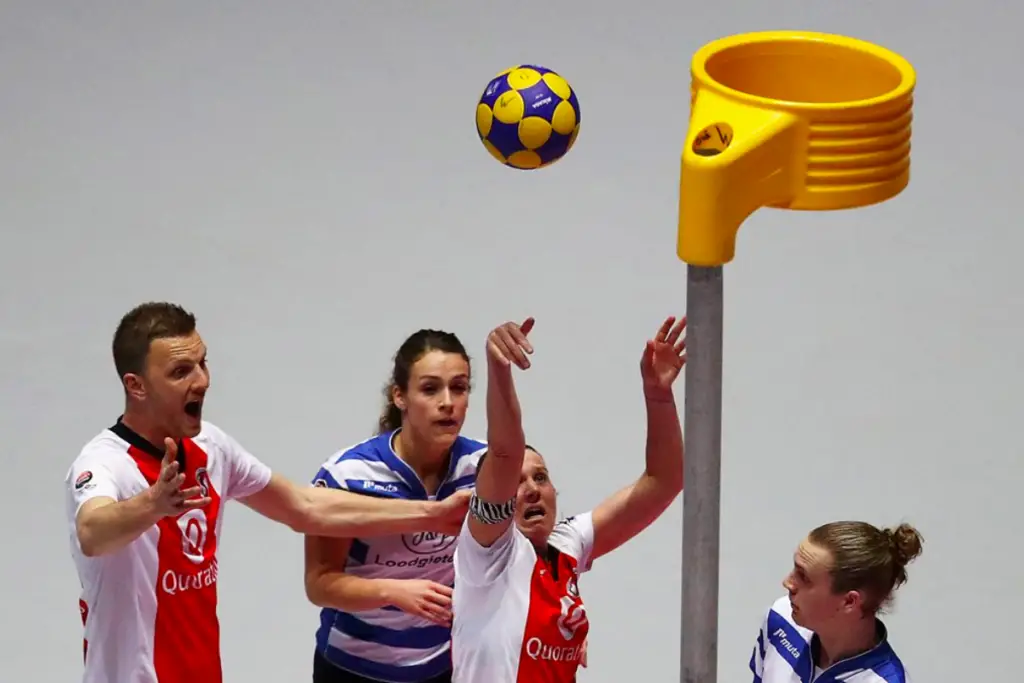
Embarking on your Korfball journey is an exciting adventure into a dynamic and inclusive sport. Your first steps will involve locating where you can play and how you can gather the necessary skills to get started.
Finding a Local Korfball Club
Beginners in Korfball should start by searching for a local club, which is integral for both learning the game and for ongoing participation. Most clubs welcome new members with open arms and often have specific sessions designed for newcomers. To find a local club, consider the following tips:
- Use search engines with terms like “local Korfball club near me” or “Korfball beginners class.”
- Check out social media groups or community bulletin boards.
- Visit the International Korfball Federation’s club finder to locate clubs in your area.
Once you find a club, reach out to them to inquire about beginner practices, membership options, and whether equipment is provided for new players.
Learning and Training Resources
After joining a local club, take advantage of learning and training resources to develop your Korfball skills. Begin with understanding the basic rules and objectives of the game by reviewing tutorials provided by your club or those available online.
Here’s how you can improve your skills through various mediums:
- Subscribe to Korfball-related YouTube channels for video tutorials.
- Attend beginner workshops or clinics offered by your Korfball club.
- Practice individual drills at home or with friends to enhance your game.
Your club’s coaches or experienced players can also be a wealth of knowledge, so don’t hesitate to ask them for advice or training tips. Regular participation in club activities will help you progress quickly in the sport.
The Social and Health Benefits of Korfball
Korfball provides a unique blend of physical activity and social interaction that has a positive impact on your wellbeing. Here, you’ll discover how engaging in this sport can bolster your mental health and foster a supportive community through teamwork.
Boosting Mental Health through Sport
Playing korfball can be a significant stress reducer and enhance your mental well-being. The game’s inherent energy and activity level get your heart pumping, which aids in releasing endorphins. These are hormones that act as natural mood lifters. Committing to regular korfball sessions can give you a stable routine that helps in managing anxiety and depression.
Building Community and Teamwork
Korfball thrives on a mixed-gender platform, promoting equality and cooperation among players. Joining a korfball team helps you in developing strong communication skills and a sense of belonging to a diverse group. The essence of korfball lies in its ability to unify players, upholding the value of each member and weaving a tight-knit community on and off the court. Through korfball, you’re not just working out your body, but you’re also crafting lasting friendships and a support network that goes beyond the sport.
Advanced Korfball Strategies

To excel in korfball at a professional level, you must be versed in both team dynamics and personal capabilities. Advanced strategies require excellent problem-solving skills and a keen understanding of the competition.
Developing Team Strategies
Strategizing as a team is paramount. You’ll want to focus on cohesion and communication. Here’s how to strengthen these aspects:
- Offensive Plays: Design intricate plays that utilize all players, capitalizing on their strengths to outwit the defense. Player Position Role in Play Key Action Attacker Main Scorer Executes final shot Support Passer/Decoy Draws defenders away Perimeter Space Creator Expands court coverage
- Defensive Maneuvers: Work on a man-to-man defense or a zone defense strategy to disrupt the opposition’s flow. Rotate duties to prevent predictability.
Enhancing Personal Skill and Agility
Your personal skills can make or break a game. Here’s what to focus on:
- Shot Precision: Practice a variety of shooting techniques from different areas of the pitch. Precision is key, especially under pressure.
- Physical Agility: Improve your agility through drills that mimic in-game movements. This increases your effectiveness both in offense and defense.
- Ladder drills for quick feet
- Cone drills for lateral and forward/backward agility
- Plyometric exercises to enhance explosive movements
Remember that agility ties directly into strategy; an agile player can adapt to the dynamic nature of korfball competition, solving problems as they arise on the pitch.
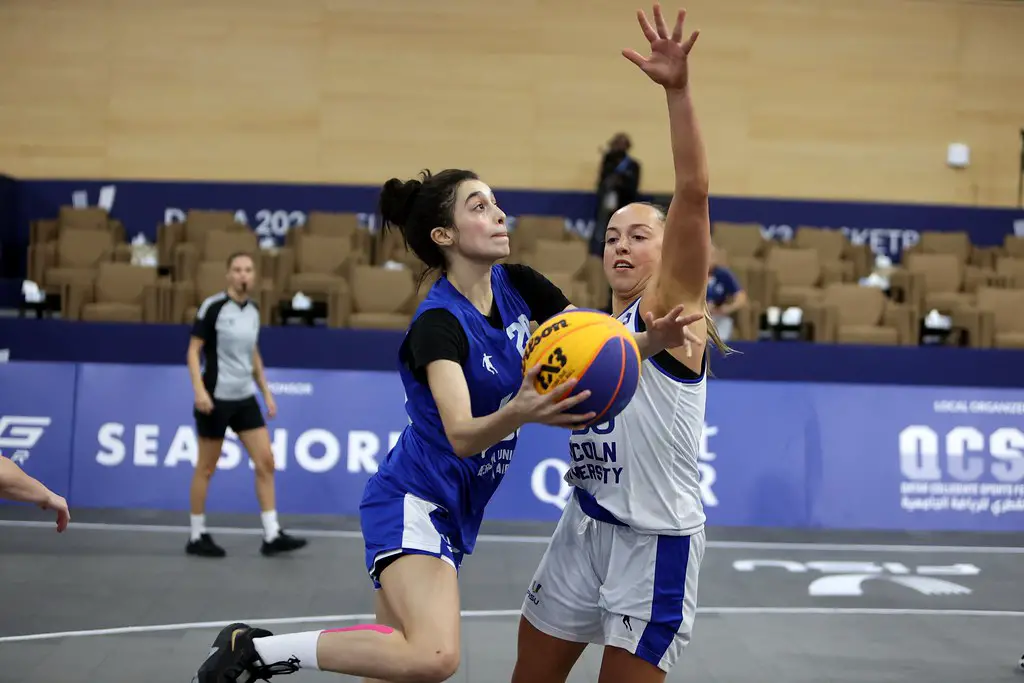
Frequently Asked Questions
Entering the world of korfball can raise many questions. This section provides clear, concise answers to some of the most common queries you might have as a beginner.
What are the basic rules of korfball for beginners to understand?
Korfball, similar to basketball and netball, requires you to score by shooting a ball into a basket. Played co-ed, teams are made of four men and four women, with the game emphasizing cooperation and fluid player roles. You can learn more through this comprehensive guide to korfball.
Which equipment is necessary to start playing korfball?
To play korfball, you need a korfball (similar to a football in size and weight), a korf (basket), and appropriate sportswear. Protective gear isn’t required but comfortable athletic shoes are recommended. For specific gear information, visit the list of korfball equipment.
What are the dimensions and markings of a korfball court?
A korfball court is a rectangular area measuring 40 meters long and 20 meters wide, divided into two equal zones. The lines include a center line and two baskets placed on opposite ends. Detailed dimensions and markings are outlined by the International Korfball Federation.
How can a complete novice start learning korfball?
As a novice, start by understanding the rules, watching matches, and practicing basic skills like passing and shooting. Joining a local club or team can offer hands-on learning and guidance. BBC Sport’s article on how to get into korfball may provide further insight.
What is the history and origin of korfball?
Korfball originated in the Netherlands in the early 20th century, designed with the idea of facilitating a sport that men and women could play together. It has Dutch roots and has since spread internationally, with international competitions being held. The history of korfball is fascinating and speaks to its inclusive nature.
In korfball, what are the restrictions on ball handling, such as walking or dribbling?
In korfball, you cannot walk with the ball or dribble as in basketball. You can pivot on one foot if you’re holding the ball. The goal is to pass the ball among teammates to find an opportunity to shoot. A player has to shoot after receiving the ball if they’ve been defended. For specific rules around ball handling, refer to the basic rules of korfball.

